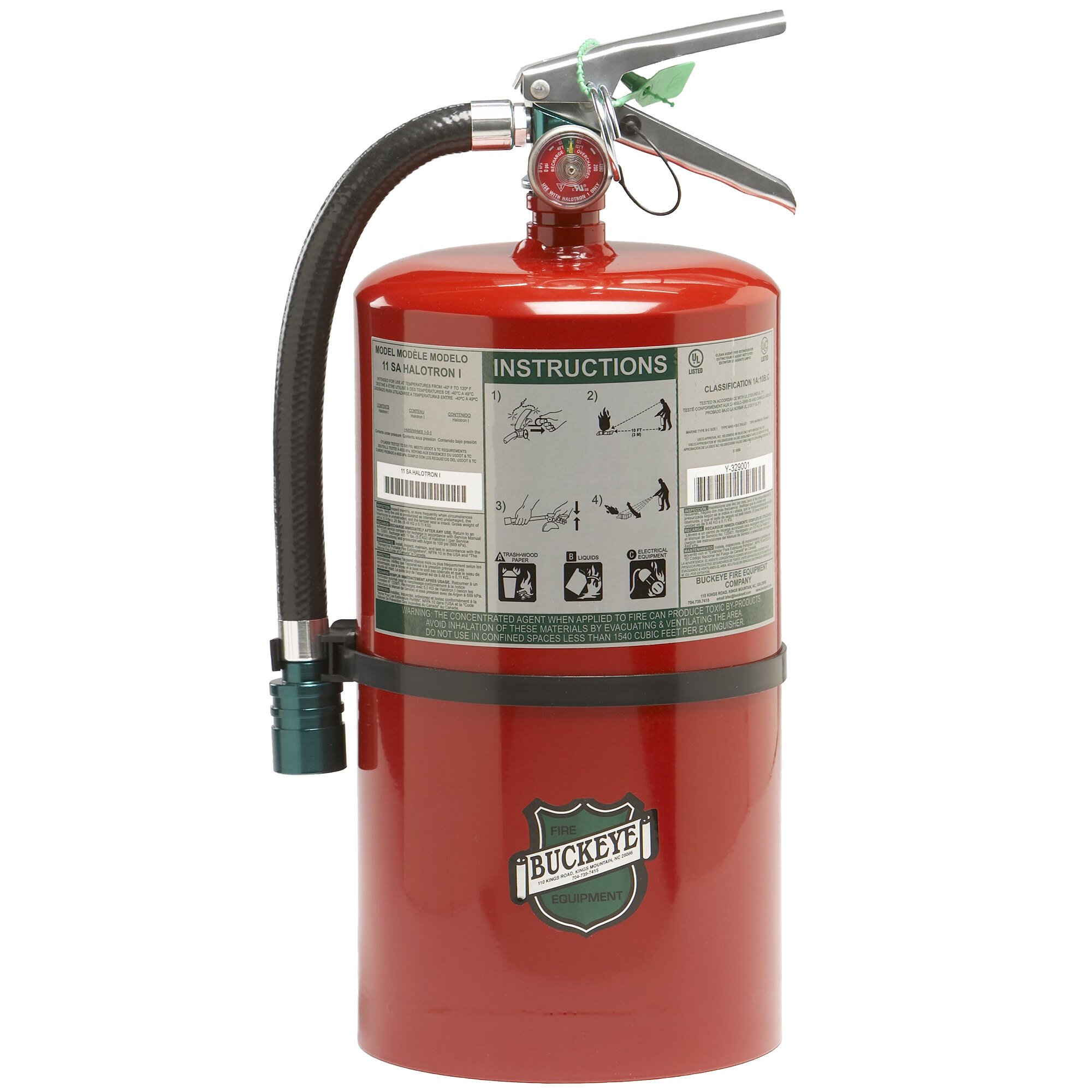
Halon fire extinguisher portable#
(1) No person shall add halon 1211 or halon 1301 to a portable fire extinguisher unless the extinguisher was manufactured before January 1, 1995. (e) in fire extinguishing equipment or a component of fire extinguishing equipment, if the equipment or component has never been used and is kept for sale. (d) at the premises of a person who has a written agreement for regular inspection of the halon storage with a business certified by Underwriters’ Laboratories of Canada in accordance with its publication ULC/ORD-C1058.18-1993, “The Servicing of Halon Extinguishing Systems” or (c) at the premises of a business certified by Underwriters’ Laboratories of Canada in accordance with its publication ULC/ORD-C1058.18-1993, “The Servicing of Halon Extinguishing Systems” or CAN/ULC-S532-M90, “Standard for the Regulation of the Servicing of Portable Fire Extinguishers” (b) in emergency tanks kept adjacent to the halon tanks of a fire extinguishing system installed for use (a) in fire extinguishing equipment kept for use No person shall store halon 1211 or halon 1301 except, (2) Despite subsection (1), fire extinguishing equipment that contains a substance mentioned in subsection (1) may be used to fight fires, except fires caused for firefighting training purposes. (c) halon 2402, also known as dibromotetrafluoroethane. (b) halon 1301, also known as bromotrifluoromethane or (a) halon 1211, also known as bromochlorodifluoromethane (1) Except in accordance with section 6, no person shall discharge or cause or permit the discharge into the natural environment of, “portable fire extinguisher” means a fire extinguisher that is manually transportable. “fire extinguishing system” means a fire extinguishing system that is not manually transportable, a fire suppression system or an explosion suppression system and includes related equipment other than a portable fire extinguisher “fire extinguishing equipment” means a fire extinguishing system or a portable fire extinguisher Azizinamini, Atorod "Non-destructive testing (NDT) of a segmental concrete bridge scheduled for demolition, with a focus on condition assessment and corrosion detection of internal tendons." (2017) Azizinamini, Atorod "Non-destructive testing (NDT) of a segmental concrete bridge scheduled for demolition, with a focus on condition assessment and corrosion detection of internal tendons.", 2017 Export RIS Citation Information.Note: This Regulation was revoked on January 1, 2011. Non-destructive testing (NDT) of a segmental concrete bridge scheduled for demolition, with a focus on condition assessment and corrosion detection of internal tendons. Yakel, Aaron Lau, Kingsley Īzizinamini, Atorod (2017). of TransportationĬontributor(s) : Rehmat, Sheharyar e Sadeghnejad, Amir Fancy, Saiada Fuadi Chunn, Brian Valikhani, Alireza Mohammadi, Alireza Taghinezhadbilondy, Ramin Moravej, Mohammadtaghi Gull, Jawad H. of Civil and Environmental EngineeringĬorporate Contributor(s) : Florida. This exemption, DOT - E 11850, was granted to the ATA on December 11, 1997.ĬITE Title : Non-destructive testing (NDT) of a segmental concrete bridge scheduled for demolition, with a focus on condition assessment and corrosion detection of internal tendons.Ĭorporate Creator(s) : Florida International University. Based upon this data, the Air Transport Association (ATA) requested an exemption from the DOT to allow their members to use this acoustic emission test in place of the hydrostatic test.

However, all bottles tested to date have passed the hydrostatic test required by the U.S.

The rest had some indication of flaws or corrosion. Results of the tests on used bottles indicate that over 95 percent of the bottles showed no indication of significant defects. This fixture is designed to fit spheres with diameters between 5 and 16 inches. The sensors are held in position, with a fixed relationship between them, by a special fixture. The system monitors a bottle with six acoustic sensors while the pressure of the bottle is raised by heating it in an oven. An acoustic emission test for aircraft Halon 1301 bottles has been developed, a prototype acoustic emission test system constructed, and over 200 used bottles tested at the repair facilities of the two manufacturers of these bottles.


 0 kommentar(er)
0 kommentar(er)
